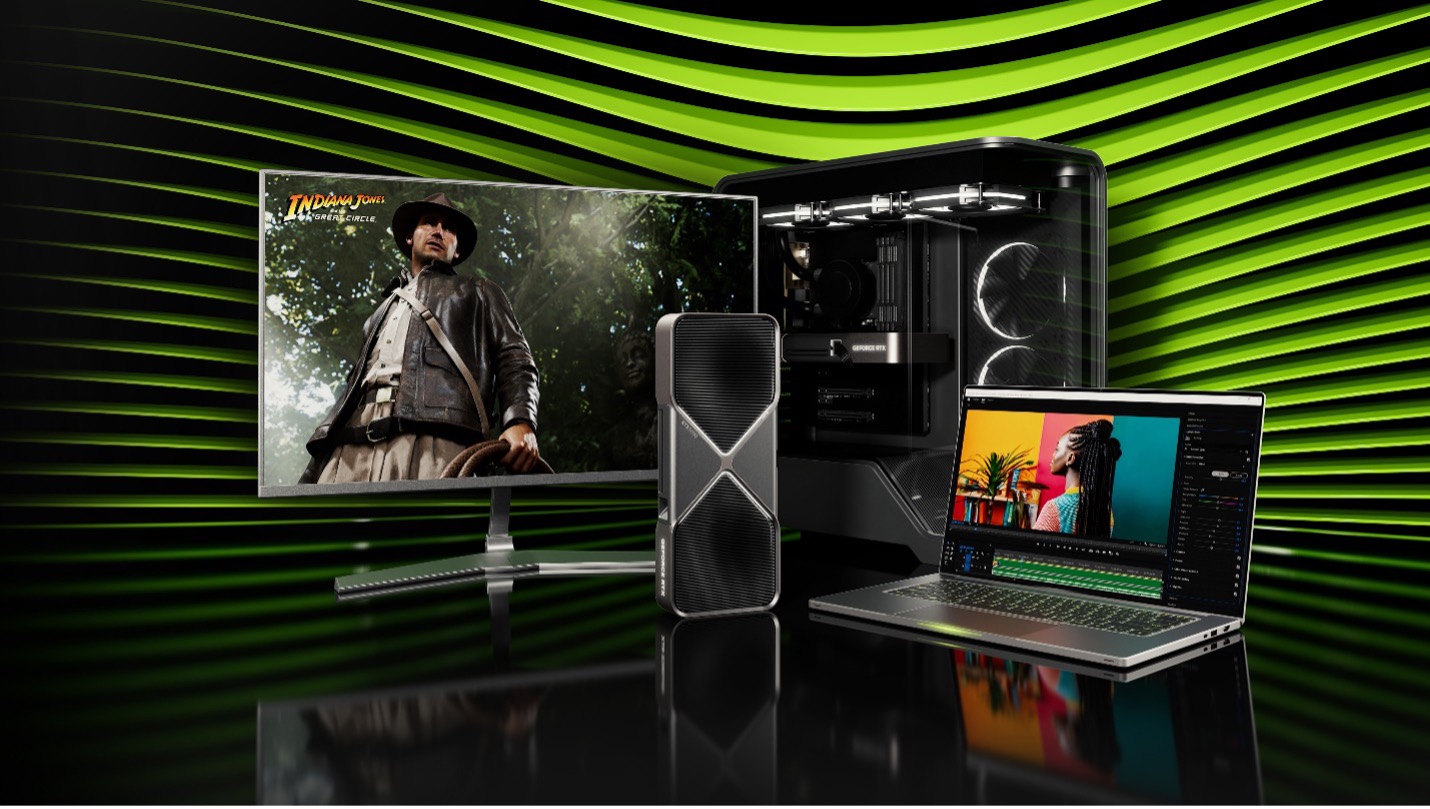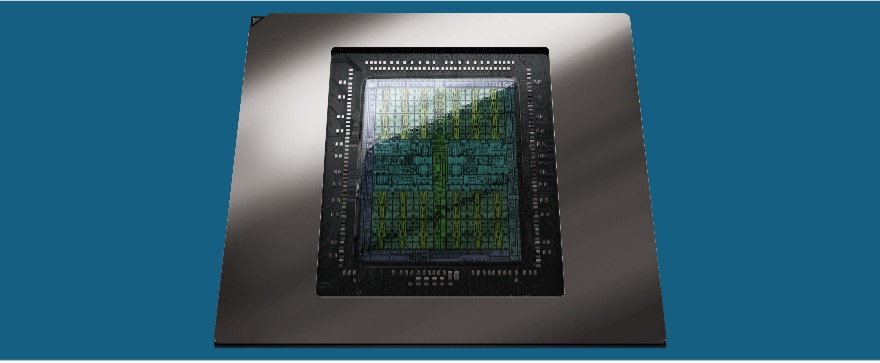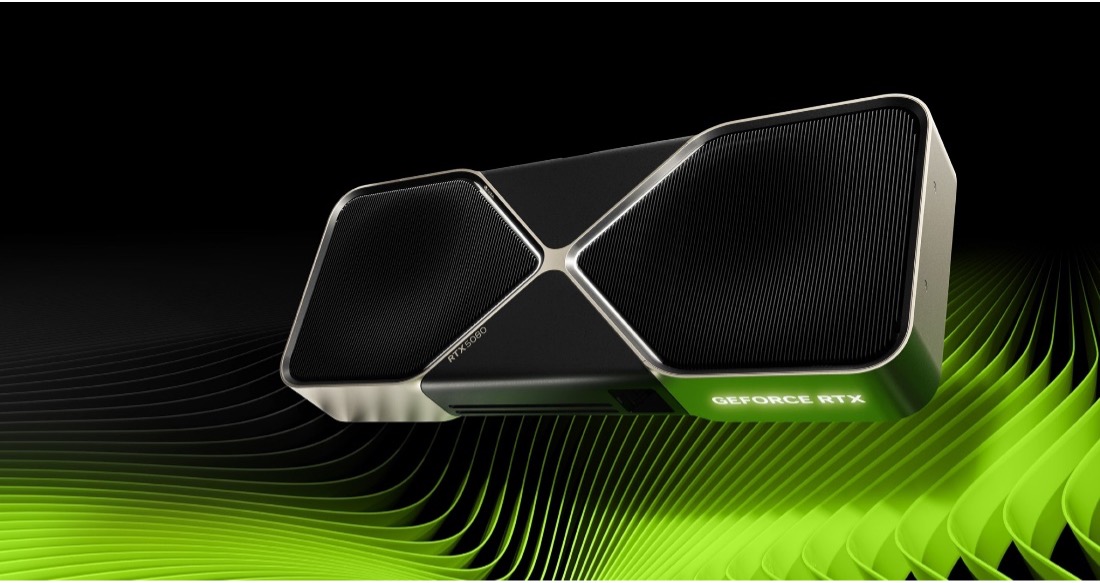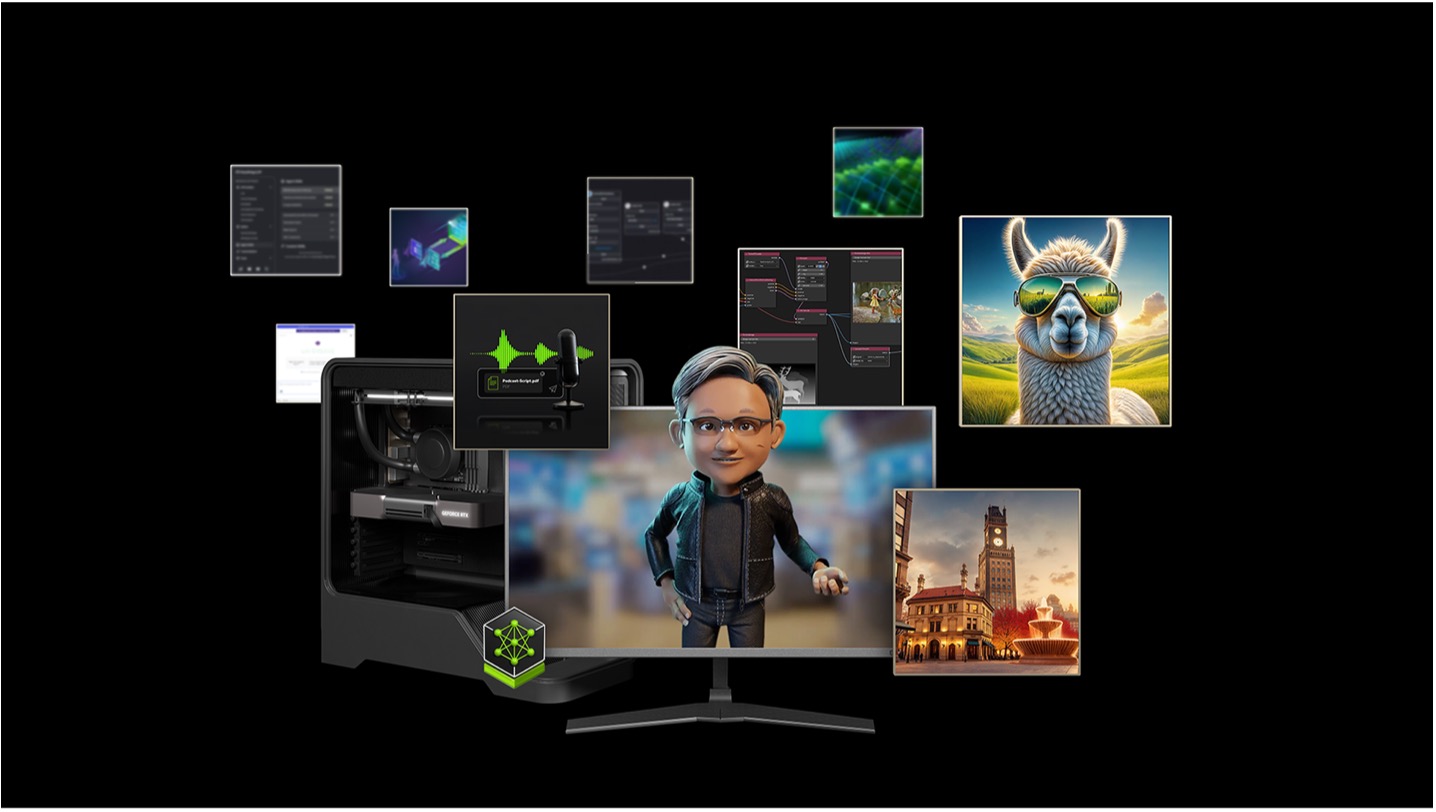Nvidia announced its RTX 5000 series at CES 2025, featuring the Blackwell architecture, 5th-generation Tensor cores, and 4th-generation RT cores. The GeForce RTX 5090 GPU, built on TSMC’s 4NP process, offers 92 billion transistors and introduces DLSS 4, enhancing frame rates and visual fidelity with AI-driven multi-frame generation and transformer-based ray reconstruction. RTX Neural Shaders and RTX Neural Faces bring advancements in rendering realism. Nvidia’s ACE technology enables AI-driven game characters in titles like PUBG and MIR5, while its NIM microservices support AI applications on RTX GPUs.
Nvidia has done such an outstanding job in establishing itself as the premier graphics board company that the anticipation of its announcement of new boards is a big event. What better place to make such an announcement than at the US’s largest consumer electronics conference?

At CES 2025, Nvidia predictably launched its expected (and partially leaked) RTX 5000 series. This AIB and GPU family will be Nvidia’s product offering until 2026, since the company declared it was on a one-year rhythm now.
The Blackwell architecture, 5th-generation Tensor cores, and 4th-generation RT cores power the Nvidia GeForce RTX 50 series. This combination delivers significant advancements in AI-driven rendering, including neural shaders, digital human technologies, geometry, and lighting.

The GeForce RTX 5090 GPU has a staggering 92 billion transistors using TSMC’s 4NP process. Along with the new GPU, Nvidia has introduced DLSS 4, the latest AI-assisted high-quality, high frame rate technology generation.
As a result of all the improvements in this new GPU, Nvidia claims GeForce RTX 5090 delivers twice the frames per second as the popular RTX 4090 in Cyberpunk 2077: Phantom Liberty and several other games.
Thanks to the Blackwell architecture’s innovations and DLSS 4, the GeForce RTX 5090 outperforms the GeForce RTX 4090 by 2x.
The Blackwell GPU will also be available on laptops, offering the same features as desktop models, the company claims. The Blackwell generation includes Nvidia’s Max-Q technology, which helps extend battery life and enables the creation of thin and light laptops.
DLSS 4 employs multi-frame generation, which uses AI to generate additional frames, increasing frame rates. DLSS 4 also incorporates the transformer model architecture in real-time graphics rendering. The transformer-based DLSS ray reconstruction and super-resolution models utilize more parameters and compute to provide improved stability, reduced ghosting, and enhanced visuals for in-game scenes. At launch, Nvidia says DLSS 4 will be supported on GeForce RTX 50-series GPUs in numerous games and applications.
Nvidia introduced its GeForce 3 with programmable shaders 25 years ago. The company is now introducing RTX Neural Shaders, which integrates small AI networks into programmable shaders. This, claims the company, enables film-quality materials, lighting, and more in real-time games.
Rendering characters in games, particularly digital humans, is challenging. Nvidia says its RTX Neural Faces addresses this by using generative AI to render high-quality digital faces in real time based on simple rasterized faces and 3D pose data.
RTX Neural Faces is complemented by other RTX technologies for ray-traced hair and skin, as well as RTX Mega Geometry, which increases the number of ray-traced triangles in a scene. These advancements are designed to enhance realism in a game’s characters and environments.
Nvidia’s “Zorah” technology demo incorporates the capabilities of neural rendering, DLSS 4, and the new DLSS transformer model on GeForce RTX 50-series GPUs.
The GeForce RTX 5090 GPU is specified at 3,352 AI TOPS to power autonomous game characters in parallel with game rendering. The AIB has 32GB of GDDR7 memory, 1,792 GB/sec of total memory bandwidth across a 512-bit bus, 21,760 CUDA cores, 680 5th-gen Tensor cores, and 170 4th-gen ray-tracing cores.

The RTX 5090 is a two-slot, 304mm (long)x137mm (high)xtwo slots (wide), with Nvidia’s small form factor (SFF)-ready guidelines that the company says offer quiet cooling of the Blackwell GPU inside through a new double-flow-through design. The AIB has three DisplayPort (2.1b) and one HDMI (2.1b) ports.
Nvidia says the 5080 GPU delivers 1,801 TOPS and has new 5th-gen Tensor cores, 4th-gen RT cores, and 16GB of GDDR7 memory providing up to 960 GB/sec of total memory bandwidth (a 34% increase compared to the GeForce RTX 4080’s 717 GB/sec).
The RTX 5070 Ti can deliver 1,406 TOPs, and the RTX 5070 produces 988 TOPS. The RTX 5070 Ti includes 16GB of GDDR7 memory, with 896 GB/sec memory bandwidth, a 78% increase in bandwidth compared to the GeForce RTX 4070 Ti’s 504 GB/sec. The RTX 5070 has 12GB GDDR7 memory and 672 GB/sec memory bandwidth, compared to the GeForce RTX 4070’s 504 GB/sec.
The company plans to use that AI TOPS power in its new Avatar Cloud Engine (ACE) technologies, which are designed to make game characters behave more like human players. These autonomous characters are being integrated into games such as PUBG: Battlegrounds, previously known as PlayerUnknown’s Battlegrounds,— a 2017 battle royale video game published by Krafton); InZOI, an upcoming life simulation game from Krafton in which the player can alter any aspect of their world to create unique stories and experiences; and in MIR5, a PC game from WeMade that will incorporate what the company claims is the world’s first LLM-driven AI boss powered by Nvidia’s ACE. In PUBG, ACE-powered companions collaborate with players for survival. InZOI includes so-called Smart Zoi characters that adapt behaviors based on life goals and events. In MIR5, raid bosses driven by language models adjust tactics in response to player actions, enhancing gameplay dynamics.
For AI development on RTX-enabled PCs, Nvidia is releasing its Nvidia Inference Microservices (NIM) and AI Blueprints from partners like Black Forest Labs, Meta, and Stability AI. These resources support applications such as language models, image generation, speech recognition, and document analysis, which are optimized for Nvidia GPUs. A video explaining and demonstrating this is available here.

To illustrate these capabilities, Nvidia showed Project R2X at CES, a PC avatar offering information retrieval, desktop app assistance, video call support, and document summarization.
Nvidia says that the RTX 50-series GPUs are the first consumer GPUs to support FP4 precision, enhancing AI image-generation performance for models like Flux by up to two times. This advancement also allows generative AI models to run locally with a reduced memory footprint compared to earlier-generation hardware.
The Nvidia broadcast app introduces two AI-powered beta features for live streamers: Studio Voice, which enhances microphone audio, and Virtual Key Light, which improves facial lighting for more professional streams. Streamlabs is launching the Intelligent Streaming Assistant, powered by Nvidia ACE and Inworld AI, to serve as a cohost, producer, and technical assistant, enhancing the livestreaming experience.
For desktop users, the GeForce RTX 5090 and RTX 5080 will be available on January 30 at $1,999 and $999, respectively.
The RTX 5070 Ti and RTX 5070 will be available starting in February at $749 and $549, respectively.
Founders Editions of the RTX 5090, RTX 5080, and RTX 5070 will be available directly from nvidia.com and select retailers worldwide.
Stock-clocked and factory-overclocked models will be available from AIB suppliers such as Asus, Colorful, Gainward, Galax, Gigabyte, Inno3D, KFA2, MSI, Palit, PNY, and Zotac, and in desktops from system builders including Falcon Northwest, Infiniarc, Maingear, Mifcom, Origin PC, PC Specialist, and Scan Computers.
Laptops with RTX 5090, RTX 5080, and RTX 5070 Ti Laptop GPUs will be available starting in March, and RTX 5070 Laptop GPUs will be available starting in April from manufacturers, including Acer, Asus, Dell, Gigabyte, HP, Lenovo, Mechrevo, MSI, and Razer.
A demo reel of DLSS can be seen here.
LIKE WHAT YOU’RE READING? INTRODUCE US TO YOUR FRIENDS AND COLLEAGUES.